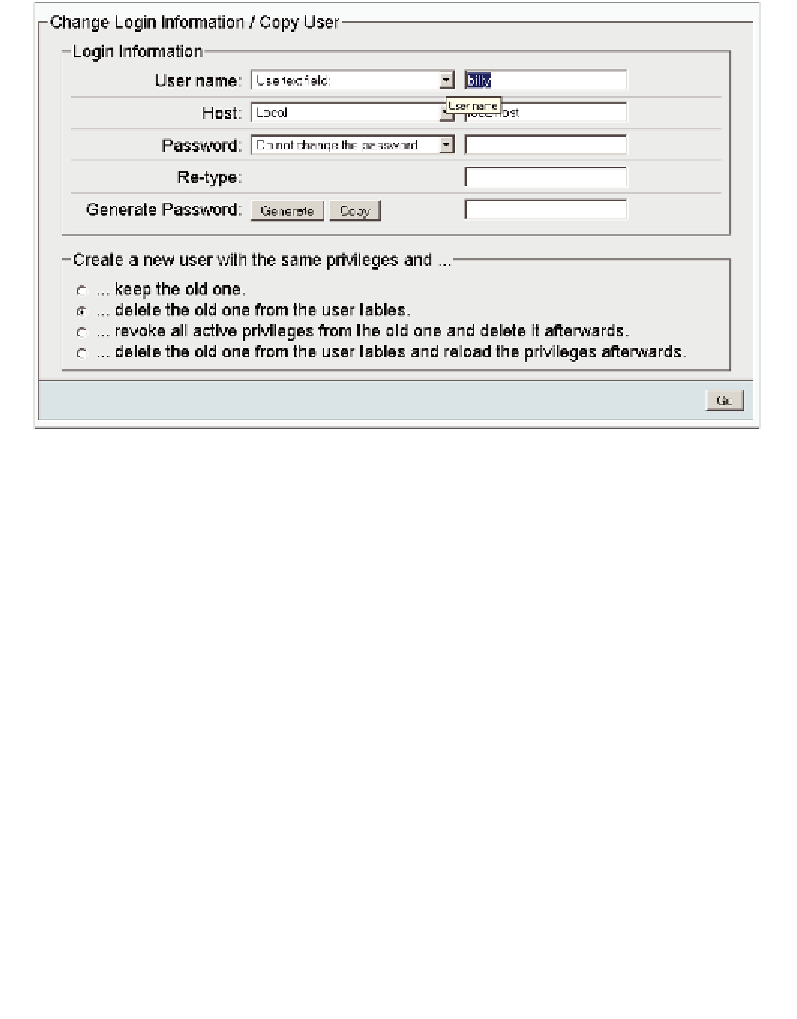Databases Reference
In-Depth Information
For example, suppose that Bill calls and tells us that he prefers the login name
billy
instead of
bill
. We just have to add a
y
to the user name, choose
Local
as the host,
and select
delete the old one from the user tables
:
After this operation,
bill
no longer exists in the
mysql
database, and all his
privileges, including the privileges on the
bill
database, will have been transferred
to the new user, billy. But
bill
is user definition will still exist in memory, so it is still
effective. If we had chosen the
delete the old one from the user tables and reload
the privileges afterwards
option instead,
bill
's user definition would immediately
have ceased to be valid.
Alternatively, we could have created another user based on
bill
by making use of the
keep the old one
choice. We can transfer the password to the new user by choosing
Do not change the password
, or change it by entering a new password twice. The
revoke all active privileges
option immediately terminates the effective current
privileges for this user if he or she is logged in.
Removing a User
This is done from the
User overview
section of the
Privileges
page. We select the
user to be removed, and then (in
Removing selected users
) we can choose to Drop
any databases that have the same name as the users we are deleting. A click on
Go
effectively removes the selected users.

Search WWH ::

Custom Search